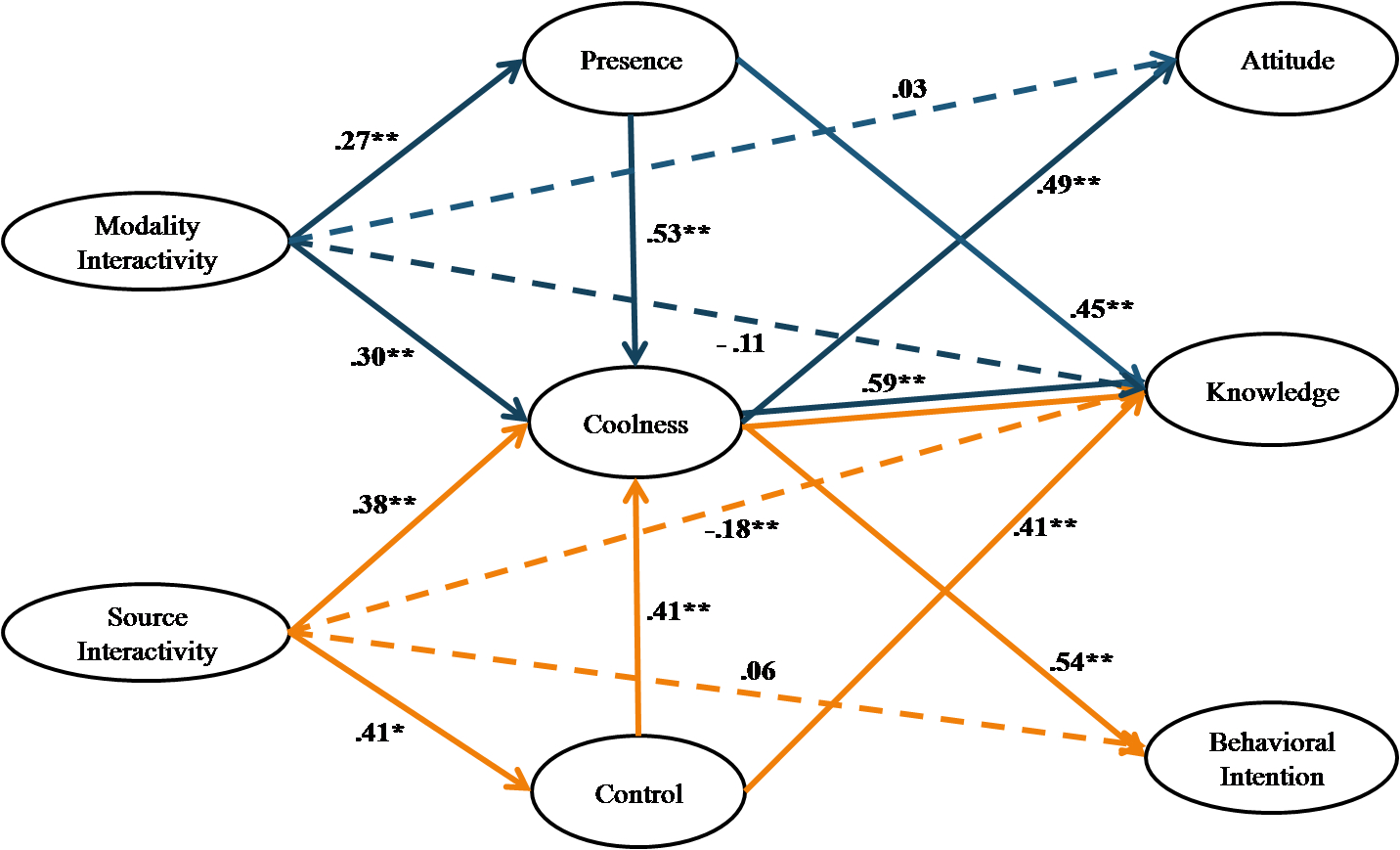Media Effects Research Lab - Research Archive
Using 3-d visualization in a fitness center website:
Student Researcher(s)
Xue Dou Kumar (Ph.D Candidate);
Kumar S (Ph.D Candidate);
Yu Lu (Ph.D Candidate);
Faculty Supervisor
INTRODUCTION
Given the increasing attention of using the Internet for health intervention in the past years, this study investigated whether using 3-D visualization in a fitness center web site would result in better knowledge, attitude, and behavioral intention towards a fitness center compared to 2-D static images. Unlike previous studies that characterized 3-D visualization with media richness and interactivity, this study adopted two types of interactivity (modality interactivity and source interactivity) from Sundar’s (2007) interactivity model to explain the effect of on 3-D visualization.
RESEARCH QUESTION / HYPOTHESES:
According to Sundar’s (2007) interactivity model, modality interactivity refers to “the variety of modalities that it offers for the user to experience the various parts of a website” (p. 90). In addition, source interactivity refers to “the extent to which the user feels that he or she is the source or gatekeeper” (p. 92). Both modality interactivity and source interactivity will increase users’ engagements with web site content, which will as a result, yield better cognitive, attitudinal, and behavioral outcomes.
Compared with 2-D static images, 3-D visualization is high in modality interactivity since it allows users to see the product in a series of continuous actions that have greater appeal to our senses. In addition, 3-D visualization in a web site is high in source interactivity since it often provides users with control over the content, such as allowing user to view the images from their desired angles. Thus, we hypothesize that;
H1: Participants who are exposed to a fitness center website with high modality interactivity will have better psychological outcomes (knowledge, attitude, and behavioral intention) towards the fitness center compared to participants who are exposed to a low modality interactivity website.
H2: Participants who are exposed to a fitness center website with high source modality interactivity will have better psychological outcomes towards the fitness center compared to participants who are exposed to a low source interactivity website.
H3: The higher the interactivity, the better the psychological outcomes.
Based on previous literature, we proposed three variables that would mediate the relationship between 3-D visualization and psychological outcomes.
H4: Sense of presence will mediate the relationships between modality interactivity and psychological outcomes
H5: Sense of presence will mediate the relationships between source interactivity and psychological outcomes
H6: Perceived control will mediate the relationships between source credibility and psychological outcomes
H7: Perceived coolness will mediate the relationships between modality interactivity and psychological outcomes
H8: Perceived coolness will mediate the relationships between source interactivity and psychological outcomes
METHOD
A 2X2 between subjects experiment was conducted using online questionnaires. Participants (N=205) were randomly assigned to interact with one of the four web sites containing; 1) six different images of the fitness center, 2) the same six images but each image could be zoomed in and out by using the scroll button as well as moved by clicking and dragging the mouse, 3) a 27 seconds long continuously streaming video of 360-degree view of the same fitness center with a frame rate of 15 frames per second, and 4) a 360-degree view of the center that could be zoomed in and out as well as panned in all the directions (up down, left, right). After viewing the website, the participants were asked to answer follow-up questions regarding their knowledge, attitudes, and behavioral intentions toward the fitness center.
RESULTS
The results provided support to the primary hypotheses that high level of modality and source interactivity leads to better psychological outcomes. In addition, presence, coolness, and control are found to mediate the relationship between two types of interactivities and psychological outcomes. Specifically, presence and coolness mediate the effect of modality interactivity on attitude and knowledge. In turn, control and coolness are found to mediate the effect of source interactivity on knowledge and one of the sub-categories of behavioral intentions, recommendation.

DISCUSSION/ CONCLUSION
Compared to 2-D static images, a fitness center website using 3-D visualization can yield better cognitive, attitudinal and behavioral outcomes. This is mainly because 3-D visualization makes people feel as if they are "there" (presence) and provides people with a sense of control over the content (perceived control). Presence and perceived control induces people to feel that the website is cool, which in turn results in better psychological outcomes.
For more details regarding the study contact
Dr. S. Shyam Sundar by e-mail at sss12@psu.edu or by telephone at (814) 865-2173

